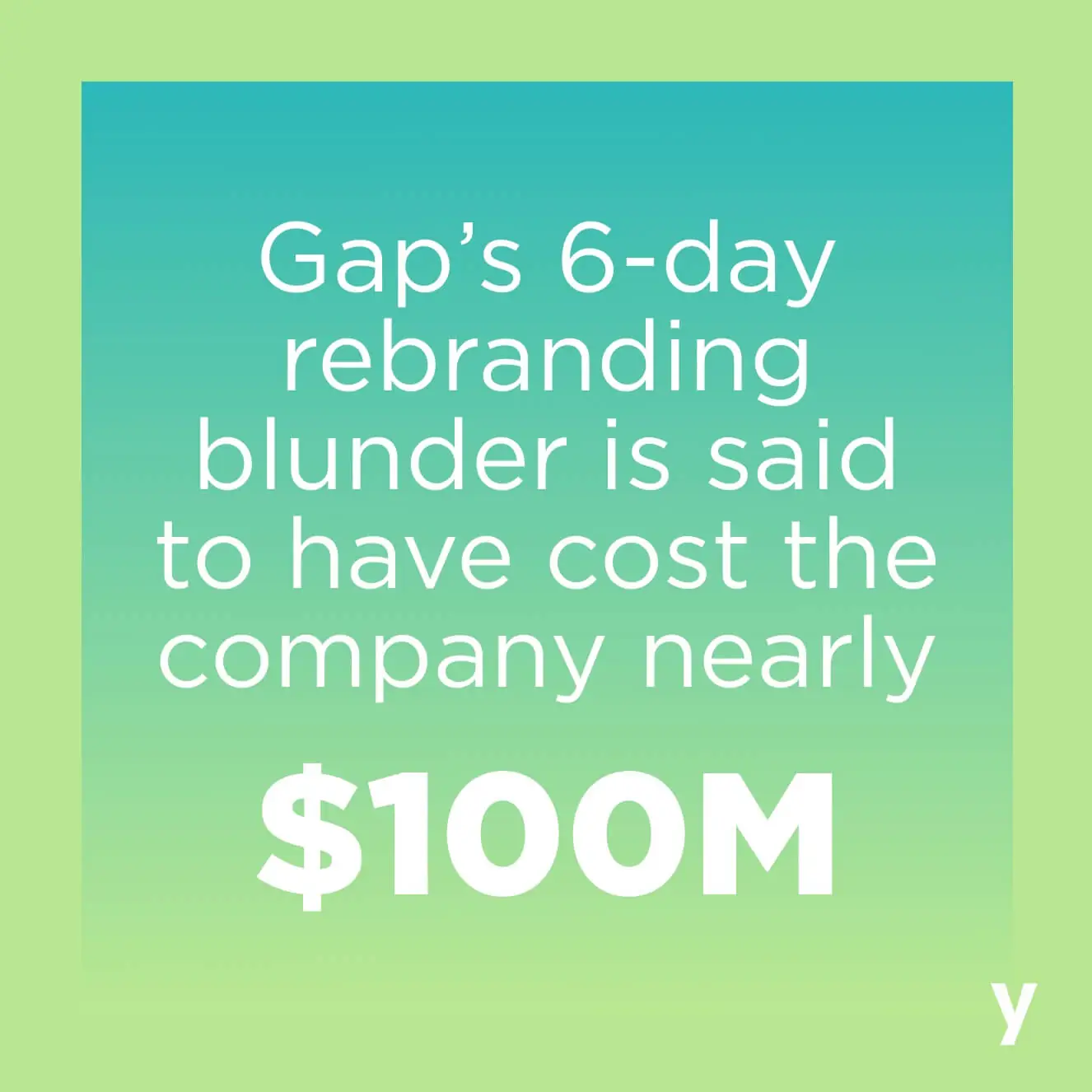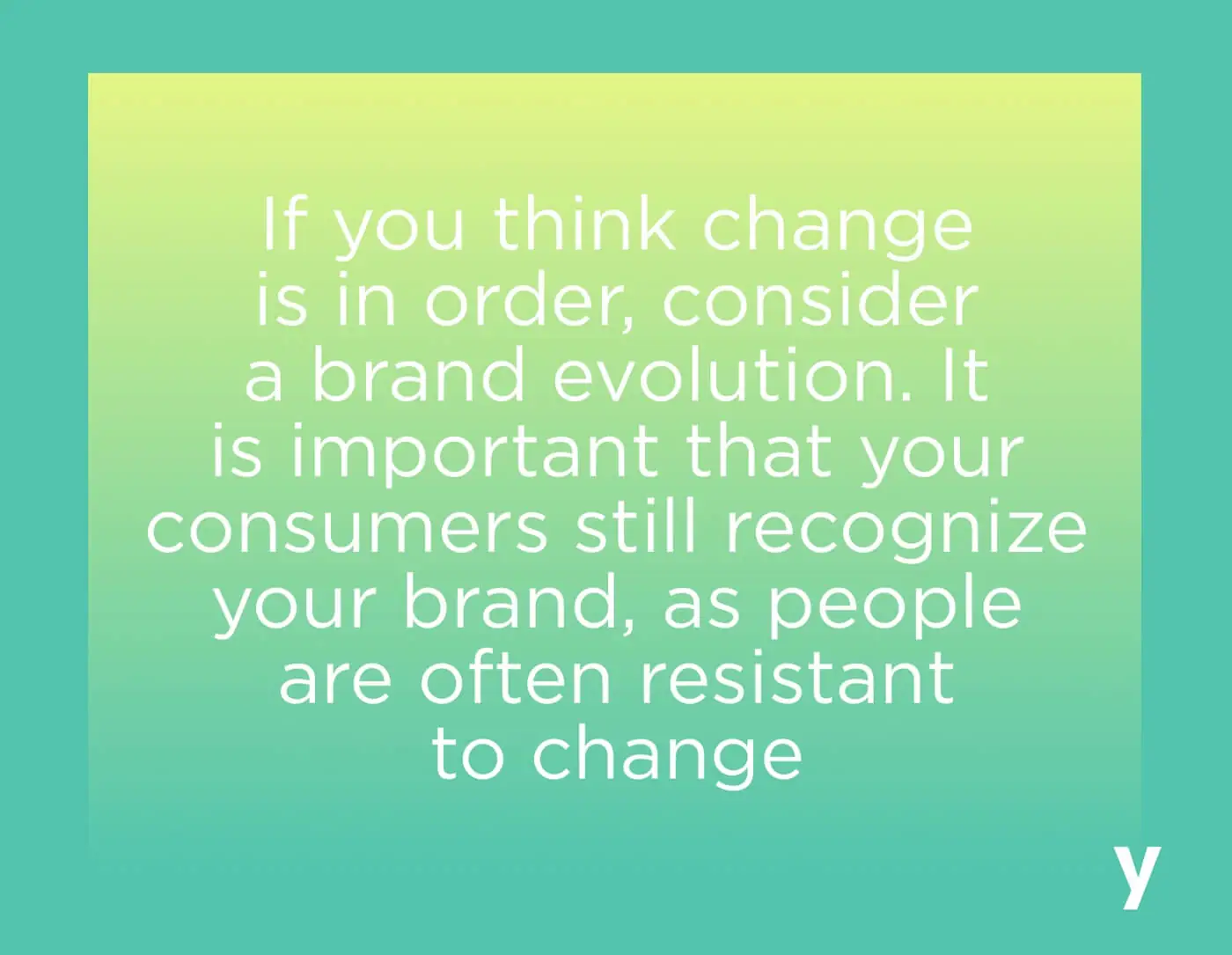As our world becomes increasingly more visual, branding is more important than ever before.
It’s not just about a logo, it’s about your entire identity.
Visual identity provides consumer insight to your company’s mission, culture, and values. As companies develop and change, there comes a time for a fresh look. With new logos, color palettes, and visual language, rebranding is no small undertaking for your employees or your bank account. However, despite commonmisconceptions, rebranding can add value by revitalizing a company’s image, boosting employee morale. and potentially bringing in new leads.
Recognizing when it is time for a change can be difficult. Before sending your brand to the beauty shop, ask yourself these three questions.
What is your end goal for rebranding?
There are many reasons why companies choose to rebrand, but all rebranding falls into one of two categories:proactive or reactive.
If your company sees a future opportunity, or perhaps you are launching a new product line, trying to reach a new audience or want to remain current, you can proactively rebrand to seize such opportunities.
Reactive rebranding occurs in reaction to a significant event, such as a merger, legal issue, competitive influence or negative publicity. For example, Anderson Consulting was part of a larger company with Arthur Anderson, an accounting firm that was tied to the collapse of Enron. Anderson Consulting broke away from the larger company, rebranded, and returned as Accenture, one of today’s top consulting firms.
 In the case of Accenture, rebranding was necessary. However, sometimes companies rebrand out of boredom. As a business owner, it is normal to become bored of your brand because you look at it every day, but your consumers don’t. Remember, branding is not for you, it’s for your consumers, and consumers like consistency.
In the case of Accenture, rebranding was necessary. However, sometimes companies rebrand out of boredom. As a business owner, it is normal to become bored of your brand because you look at it every day, but your consumers don’t. Remember, branding is not for you, it’s for your consumers, and consumers like consistency.
Take it from The Gap. In 2010, the clothing retailer abandoned its 20 year logo to a more modern, almost tech-inspired logo that featured a bold font and a square, fading diagonally from light to dark blue. The change came without warning and consumers were not happy about it.
As a result, Gap performed one of the fastest branding turnarounds, when they reverted to the classic logo within just six days of introducing the rebranding. The branding blunder is said to have cost the company $100 million.
$100 million is a lot of money to alleviate boredom.
Do you have brand equity?
Brand equity, or the public’s valuation of your brand, is critical when deciding whether or not to rebrand. With brand equity comes widespread recognition and customer loyalty. When consumers see your brand, do they automatically associate with a positive or negative experience? Positive experiences lead to stronger brand equity, which is incredibly valuable. Generally, brands with higher brand equity don’t want to lose that value by performing a complete overhaul.
 If you think change is in order, consider abrand evolution. It is important that you consumers still recognize your brand, as people are oftenresistant to change, as seen with the Gap’s branding overhaul. Evolutions allow you to freshen up your brand by utilizing enough elements to maintain brand recognition, but changing enough to move your brand forward.
If you think change is in order, consider abrand evolution. It is important that you consumers still recognize your brand, as people are oftenresistant to change, as seen with the Gap’s branding overhaul. Evolutions allow you to freshen up your brand by utilizing enough elements to maintain brand recognition, but changing enough to move your brand forward.
If you have negative brand equity, you will want to consider a change. In dire situations, a completely new logo and new company name may be in order to alleviate negative associations with your company.
For example, IHOP, a restaurant chain known for bring smiles to consumers faces through piles of pancakes and whip cream, had inadvertently been advertising as a pro-frown company for over 20 years, thanks to an arched red banner below the company’s name. The breakfast chain hadn’t had any true negative feedback from the logo, but to ensure consumers they were in the business of make people happy, they turned the frown upside down in 2015. With a simple red swipe under “eye” of “O” and “P” and a marketing campaign, #ihopsmile, consumers were encouraged to tag photos of themselves enjoying stacks of pancakes.
Is your brand story still relevant?
The marketplace is continuously changing and companies feel pressure to rebrand to keep up with the times. As reported byProphet, the strongest brands are the ones that are relentlessly relevant and making a difference in consumers’ lives. Companies like Amazon and Netflix continuously adapt to provide fundamentally modern experiences. Amazon was once a website that simply sold things, now it offers instantaneous shopping and has brought a personal assistant named Alexa to millions of households.
Before diving into a rebranding project, it is important to consider what kind of rebranding you are looking for. Are you rebranding your entire company, or just aspects of it? Changing an entire brand requires a complete reconsideration of targeted personas, messaging, and visual elements. Major rebranding can also be disrupting and confusing, so it is critical you think through the transition from old to new before diving in.
With that said, brands that stay current are viewed as more credible, stronger, and better equipped to win in the future. Take Verizon Wireless, for example. The company’s heritage logo was thought of as a disgrace to the design world, but for years, the company didn’t make a change. It wasn’t until 2015, after Verizon purchased AOL, that they revealed a more modern brandmark. When asked why they made the change, company executives revealed the desire to parallel the evolution of the technology and communications industry. The company viewed their new logo as a chance to further everyone’s understanding of the company’s mission and purpose.
3 Questions to Ask Yourself Before Rebranding
Deciding whether or not to rebrand can be a difficult decision. It’s costly, resource intensive, and can cause confusion among consumers. However, staying up to date also adds value to your company. Before rebrand, consider these questions, and when you make the decision to change, call a reputabledigital brand agency.




